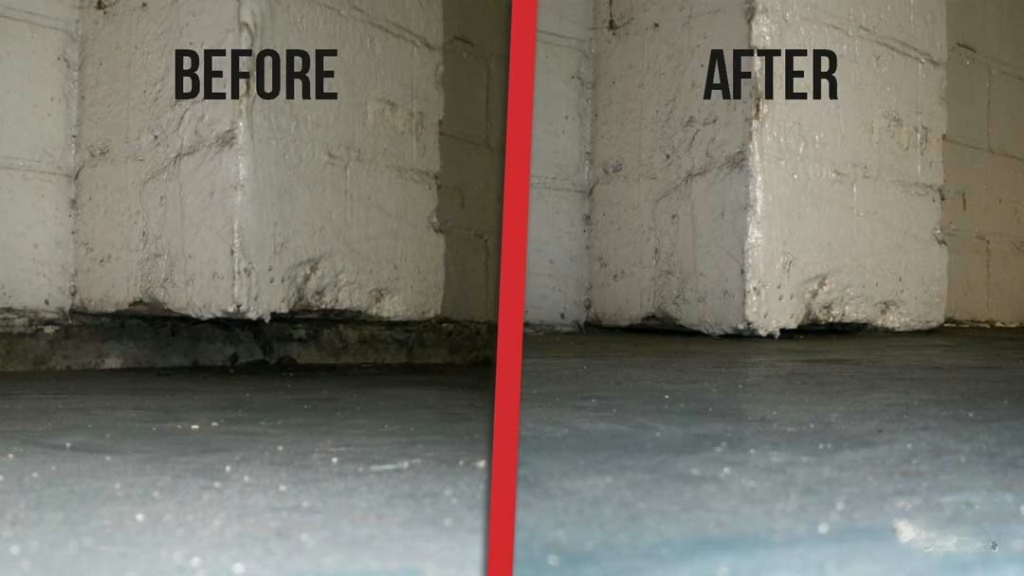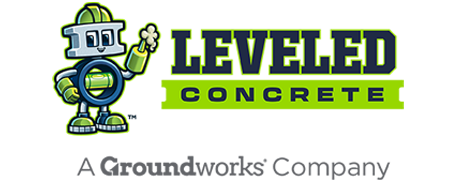Sunken concrete is a common issue for property owners. Driveways, sidewalks, warehouse floors, and parking lots can settle or shift due to soil movement, erosion, or moisture problems. This leads to uneven surfaces that create trip hazards, vehicle damage, and liability risks.
If you’re looking into repair options, you’ve likely heard of concrete raising. It’s a fast and less invasive alternative to full replacement. But is it a permanent solution? Here’s what you need to know about the process, what it solves, and what to expect.
Concrete Raising: The Basics
Concrete raising (also called slab lifting or concrete leveling) involves injecting a material underneath sunken concrete to lift it back into place. It’s popular with residential, commercial, and industrial clients because it’s quicker and less disruptive than tearing out and replacing concrete.
At Leveled Concrete, we use polyurethane foam injection. It expands under the slab, fills voids, and raises the surface. This method is used on:
- Sidewalks
- Driveways
- Warehouse floors
- Parking lots
- Pool decks
- Interior slabs
We’ve worked on everything from backyard patios to bustling warehouse floors, and every job starts with the same goal: make it safe and make it last.
What Causes Concrete to Sink in the First Place?
Understanding the cause helps manage expectations and choose the right fix. Common causes include:
- Soil erosion from water washing away material under the slab
- Poor soil compaction during original construction
- Expansive clay soils that shrink and swell
- Tree roots or burrowing animals disturbing the subbase
Concrete raising corrects the result, but the cause may still exist. That’s why each project starts with a detailed evaluation.
The Process: Before, During, and After
When you work with Leveled Concrete, you’ll know exactly what’s happening each step of the way, from start to finish. Our crew takes pride in walking you through each step so there are no surprises, just solid results.
Before
- Inspection: A foundation repair specialist inspects the area to identify settlement patterns and check the soil condition.
- Planning: Injection points and lift goals are mapped out. We make sure nearby structures, drainage, and utilities are considered.
During
Before starting injection, we double-check all plans and make sure everything on site is prepped and safe. We also walk the property owner through the game plan so everyone’s on the same page before we begin.
- Drilling: Small holes (about the size of a nickel) are drilled into the concrete surface.
- Injection: Polyurethane foam is injected below the slab. It expands to fill gaps and lifts the concrete gradually.
- Monitoring: The lift is closely monitored to avoid overcorrection. We use real-time elevation tools to make sure the slab is raised to the right height without stress to nearby joints or walls.
After
- Sealing: Injection holes are patched with concrete.
- Cleanup: The area is cleaned and restored.
- Walk/drive ready: Most surfaces can handle normal use within 30 minutes. For large commercial areas, we’ll confirm weight limits and traffic timing before reopening the site.
How Long Does It Last?
Polyurethane foam lifting doesn’t break down or wash away. It’s water-resistant and stable. When applied to the right type of problem, concrete raising can last for years.
That said, future soil movement can cause new settling. Drainage fixes or root barriers may be needed to prevent repeat problems. Routine foundation inspections help spot issues early.

Our team at Leveled Concrete specializes in concrete lifting and stabilizing for homes, commercial buildings, and industrial properties. We’ve seen our work hold strong for years, and we back it up with honest answers if any issues come up later. Call today to learn more!
FAQs About Concrete Raising
If you’re still wondering if this method fits your needs, these answers should clear things up.
Is concrete raising cheaper than replacement?
Yes. It usually costs half or less than full replacement and takes less time.
Will the foam break down over time?
No. Concrete leveling foam is durable, waterproof, and chemically stable.
Can it be done in bad weather?
Light rain isn’t a problem, but the ground can’t be frozen or saturated.
How long does the process take?
Most jobs are done in a few hours, including cleanup.
Will the patch holes be visible?
The holes are small and patched to match the surface as closely as possible.
What if the concrete sinks again?
If there are ongoing soil issues, we’ll discuss options like drainage improvements or additional lifts.
Ready to Fix Your Sunken Concrete?
We’re a local team that enjoys rolling up our sleeves and solving concrete problems every day. We bring years of experience, advanced materials, and reliable results.
Book your free estimate now and see if concrete raising is right for your project. If you need Houston concrete leveling, call us or schedule online. We’re here to help you get safe, smooth, and stable concrete again.

